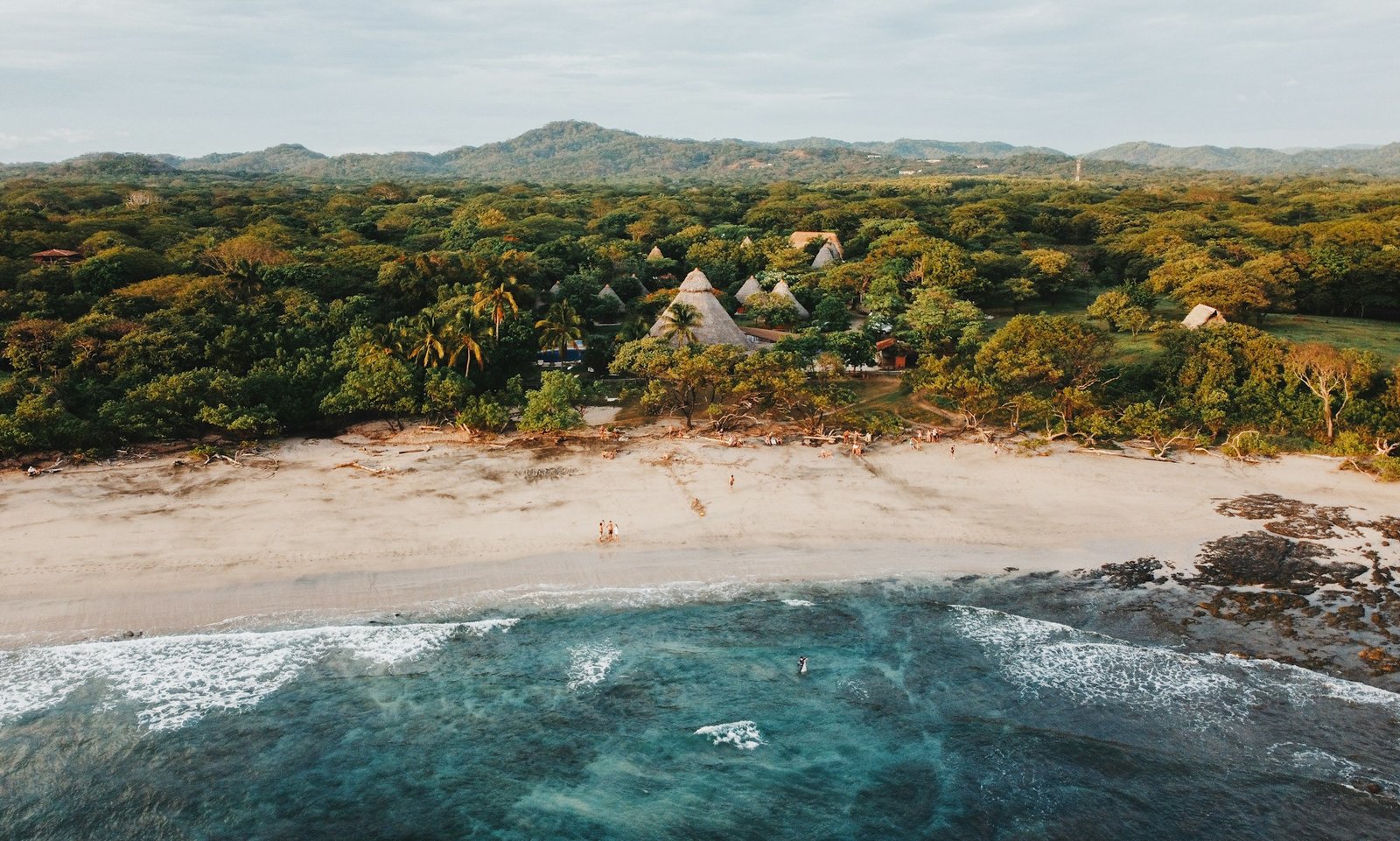Central America adventure opportunities offer some of the most thrilling and diverse experiences on the planet, combining adrenaline-pumping activities with rich cultural immersion across seven spectacular countries. From sliding down active volcanoes in Nicaragua to diving the world’s second-largest barrier reef in Belize, this narrow strip of land between North and South America packs an extraordinary variety of adventures into a relatively small geographic area. The region’s unique combination of volcanic landscapes, pristine rainforests, ancient Maya ruins, and crystal-clear Caribbean waters creates an adventure playground that caters to every type of thrill-seeker, while remaining surprisingly affordable compared to other global adventure destinations.
Table of Contents
Volcano Boarding at Cerro Negro, Nicaragua – The World’s Most Extreme Sledding Experience
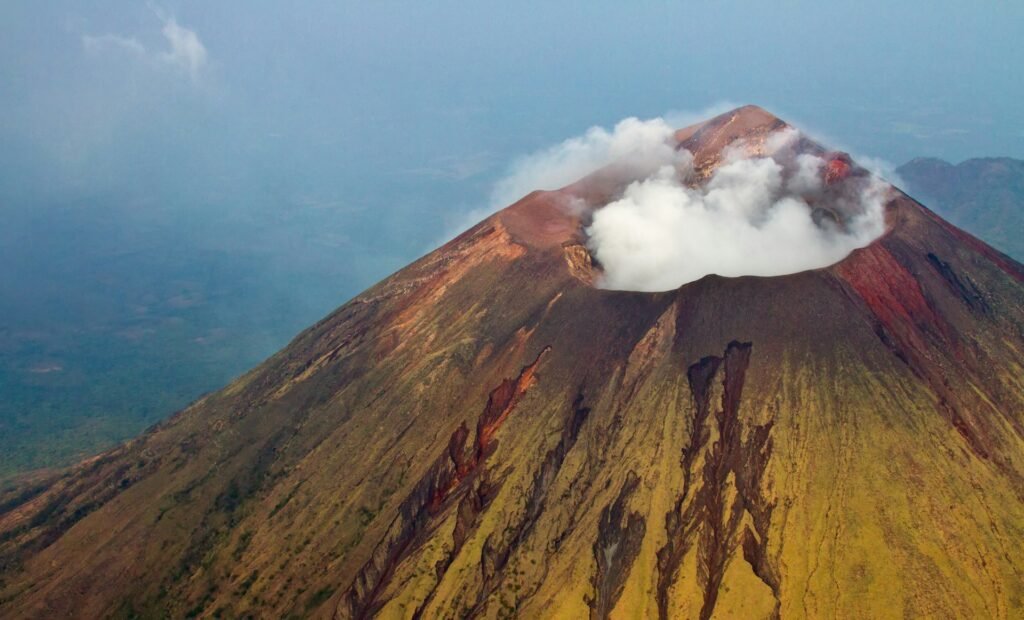
Location: León, Nicaragua
Best Time to Visit: December to April (dry season)
Cost Range: $25-45 USD
Difficulty Level: Moderate to High
Volcano boarding at Cerro Negro represents one of the most unique Central America adventure activities available anywhere in the world. This extreme sport involves hiking up Nicaragua’s youngest and most active volcano, then sliding down its steep, ash-covered slopes on a specially designed board at speeds that can reach up to 60 mph (97 km/h). The experience begins with a challenging 45-minute to 1-hour hike carrying your board up the 728-meter-high volcano, but the reward is an adrenaline-fueled descent that typically lasts just a few minutes.
Cerro Negro’s black volcanic slopes provide the perfect surface for this activity, as the fine volcanic ash creates ideal sliding conditions while the volcano’s relatively recent formation (1850) means fewer obstacles. The volcano last erupted in 1999, and while it remains active, its activity is carefully monitored, making it safe for adventure tourism. Many tour operators now offer sunset volcano boarding experiences, where adventurers can watch spectacular sunsets at the base of the volcano after their descent.
Adventure Tips: Wear protective clothing including long sleeves and pants, bring goggles and gloves, and don’t forget sunscreen for the exposed hike up. Most tour operators provide safety equipment and protective suits. The activity requires good physical fitness due to the steep hike, but no previous experience is necessary.
Cultural Insight: Volcano boarding was invented in 2002 by National Geographic adventurer Zoltan Istvan on Mount Yasur in Vanuatu, but Nicaragua’s Cerro Negro has become the sport’s global epicenter due to its ideal conditions and established tourism infrastructure.
Diving the Belize Barrier Reef – Underwater Paradise in the Caribbean
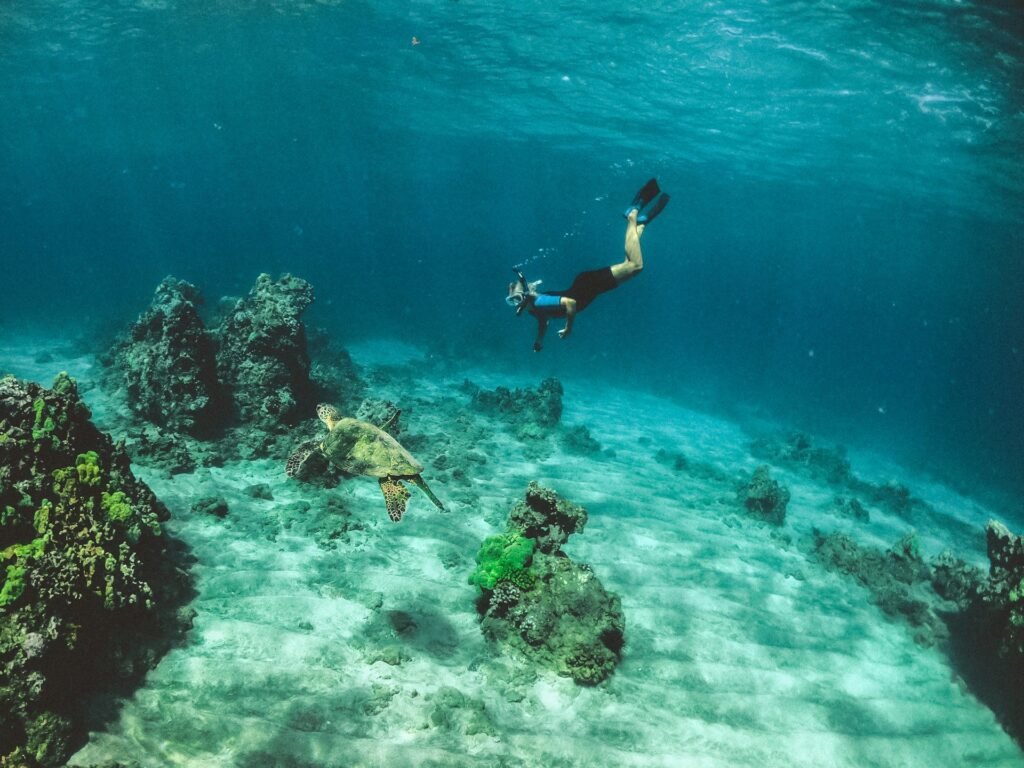
Location: Caye Caulker, San Pedro, and South Water Caye, Belize
Best Time to Visit: April to June for optimal visibility, November-July for general diving
Cost Range: $45-85 USD per dive
Difficulty Level: Beginner to Advanced
The Belize Barrier Reef System represents the crown jewel of Central America adventure diving, stretching 300 kilometers along Belize’s Caribbean coast and ranking as the second-largest barrier reef system in the world. This UNESCO World Heritage Site hosts over 500 species of fish, 100 species of coral, and countless marine creatures including nurse sharks, sea turtles, rays, and the occasional whale shark during peak seasons.
Diving sites around the reef offer incredible diversity, from the world-famous Blue Hole – a 400-foot-deep circular sinkhole perfect for advanced divers – to shallow coral gardens ideal for beginners and snorkelers. The South Water Caye Marine Reserve, one of Belize’s largest protected marine areas, provides particularly pristine diving conditions with excellent visibility and abundant marine life. Popular dive sites include Hell Hole, The Abyss, and Shark Ray Alley, where divers can encounter southern stingrays and nurse sharks in their natural habitat.
Adventure Tips: Get PADI certified before arriving to maximize your diving opportunities. Water temperatures remain warm year-round (78-84°F), making diving comfortable in just a wetsuit. Book dive packages to reduce costs, and consider staying on Caye Caulker for the authentic “go slow” island experience.
Local Insight: The reef system supports Belize’s entire tourism industry and local fishing communities. Many dive operators participate in conservation efforts, including lionfish removal programs and coral restoration projects, allowing visitors to contribute to marine conservation while enjoying their adventure.
Canopy Zip-lining Through Costa Rica’s Cloud Forests

Location: Monteverde, Arenal Volcano area, and Manuel Antonio, Costa Rica
Best Time to Visit: December to April (dry season)
Cost Range: $45-80 USD
Difficulty Level: Low to Moderate
Costa Rica pioneered canopy exploration tourism and remains the world leader in zip-lining adventures through pristine rainforest ecosystems. The country’s zip-line tours offer visitors the chance to soar through multiple forest layers, from the forest floor to the emergent canopy, providing unique perspectives on biodiversity that 90% of rainforest species call home. Monteverde’s cloud forests offer particularly spectacular experiences, with zip-lines threading through perpetually mist-shrouded vegetation that supports over 400 bird species.
The most impressive zip-line experiences include Monteverde’s 5,220-foot line – Costa Rica’s longest – and Manuel Antonio’s dual racing lines that stretch over 4,300 feet with Pacific Ocean views. Modern safety systems include controlled-breaking mechanisms that eliminate the need for manual braking, allowing riders to enjoy the experience hands-free while maintaining complete safety. Many tours combine zip-lining with hanging bridges, rappelling, and Tarzan swings for comprehensive canopy adventures.
Adventure Tips: Wear closed-toe shoes (mandatory at most locations), bring a light rain jacket during wet season, and book early during dry season peak times. Most locations have weight restrictions (typically 253 lbs maximum) and minimum age requirements (usually 6 years old with adult supervision).
Cultural Significance: Costa Rica’s zip-line industry emerged from scientific research efforts to study rainforest canopies and has become a model for sustainable adventure tourism that generates income for local communities while supporting conservation efforts.
Swimming in Semuc Champey’s Natural Limestone Pools, Guatemala
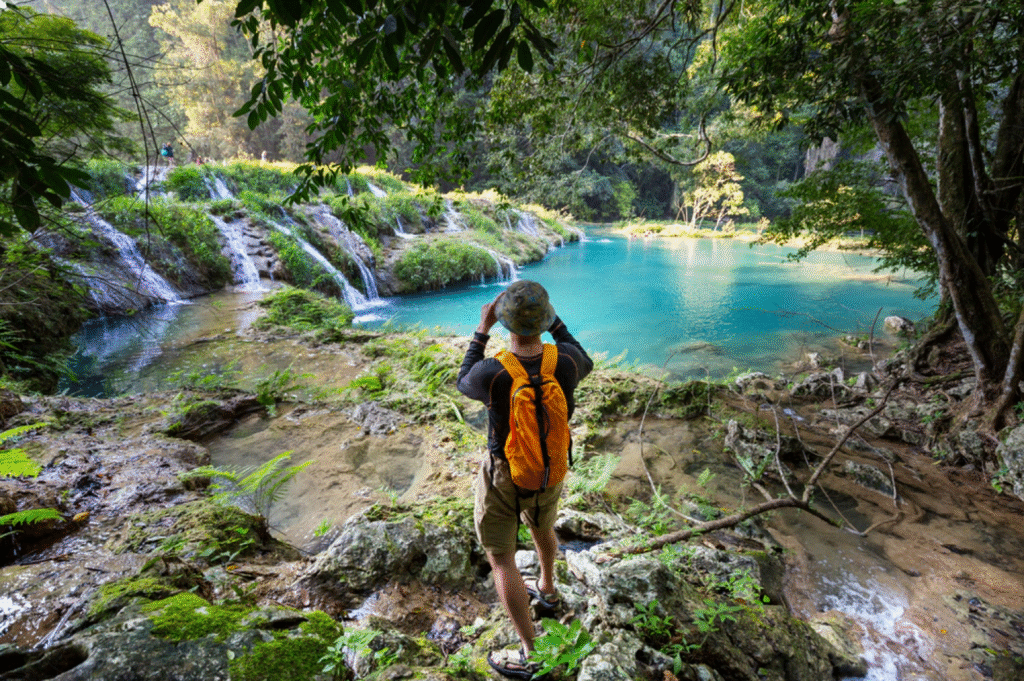
Location: Lanquín, Alta Verapaz, Guatemala
Best Time to Visit: December to April (dry season)
Cost Range: $20-35 USD including transportation
Difficulty Level: Moderate (due to remote access)
Semuc Champey, meaning “where the river hides beneath the earth” in the Q’eqchi’ Maya language, represents one of Guatemala’s most spectacular natural wonders. This geological marvel consists of a 300-meter natural limestone bridge under which the turbulent Cahabón River flows, while above, a series of stepped turquoise pools cascade down the landscape, creating what appears to be nature’s own infinity pools.
The journey to Semuc Champey is an adventure itself, requiring a bone-jarring 45-minute ride in the back of 4×4 trucks from Lanquín through mountainous jungle terrain. Once there, visitors can swim in the crystal-clear pools, each with different depths and temperatures, cliff jump between levels, and explore the surrounding rainforest. The highlight for many is the challenging hike to the mirador (viewpoint) that provides breathtaking aerial views of the entire pool system.
Adventure Tips: Stay overnight in Lanquín to maximize your time at Semuc Champey and avoid the long day-trip journey from Antigua or Flores. Bring waterproof cameras, quick-dry clothing, and be prepared for basic facilities. The pools can be cold, so the hike to the viewpoint first helps warm you up before swimming.
Cultural Insight: The area remains sacred to local Q’eqchi’ Maya communities, and tourism has provided economic opportunities for indigenous guides and families. Many visitors combine their Semuc Champey experience with cave exploration by candlelight, an activity that connects to ancient Maya beliefs about the underworld.
White Water Rafting the Pacuare River, Costa Rica
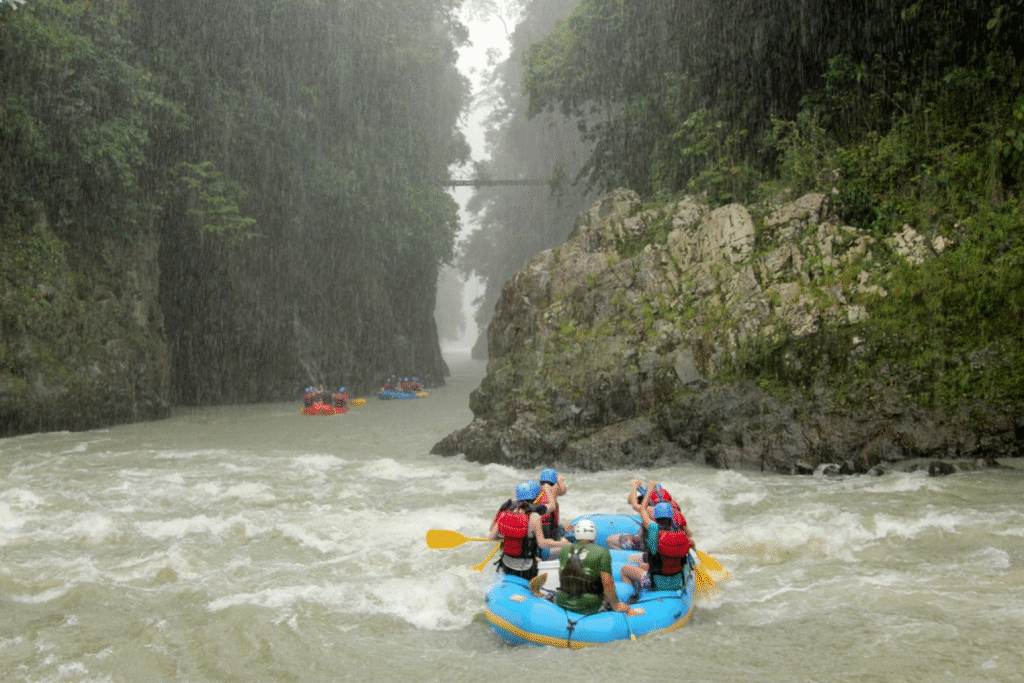
Location: Turrialba region, Cartago Province, Costa Rica
Best Time to Visit: May to December for higher water levels, year-round availability
Cost Range: $85-150 USD for day trips, $200-400 USD for multi-day experiences
Difficulty Level: Moderate to High (Class III-IV rapids)
The Pacuare River consistently ranks among the world’s top whitewater rafting destinations, earning recognition from National Geographic as one of the planet’s ten most scenic rivers. This 108-kilometer river offers 52 rapids ranging from Class II to Class V, threading through pristine rainforest gorges where waterfalls cascade directly into the river and wildlife viewing opportunities abound. The most spectacular section runs through the Pacuare River Gorge, where sheer canyon walls draped in virgin rainforest create a prehistoric atmosphere.
Multi-day rafting expeditions allow visitors to stay at renowned eco-lodges like Pacuare Lodge and Rios Lodge, combining adventure with luxury accommodations in jungle settings. These experiences typically include gourmet meals prepared with local ingredients, guided nature walks, and optional activities like zip-lining and rappelling. The river ecosystem supports incredible biodiversity, including sloths, toucans, parrots, poison dart frogs, and occasionally jaguars and tapirs along the riverbanks.
Adventure Tips: No previous rafting experience required, as professional guides provide comprehensive safety briefings and instruction. The river runs year-round, but water levels are highest October through December. Book overnight packages for the full experience, and consider combining with other adventure activities.
Local Insight: The Pacuare region is home to Bribri and Cabécar indigenous communities who offer cultural tours and traditional cooking experiences, providing insight into Costa Rica’s indigenous heritage alongside the adventure activities.
Hiking Active Volcanoes in Guatemala’s Highlands
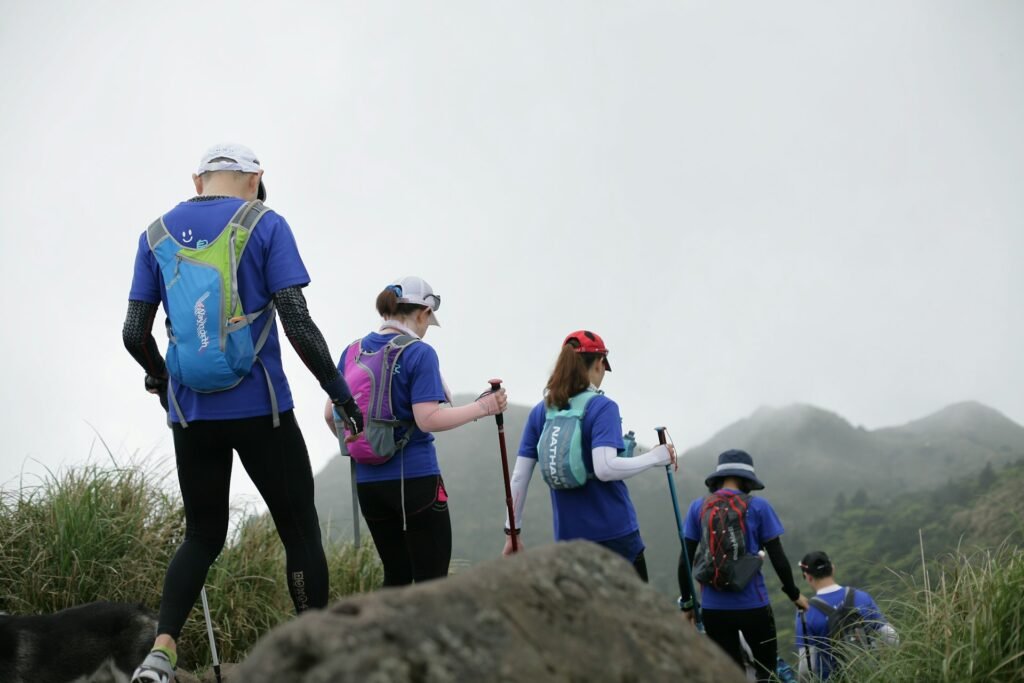
Location: Acatenango and Pacaya volcanoes near Antigua, Guatemala
Best Time to Visit: December to April (dry season)
Cost Range: $35-60 USD for guided tours
Difficulty Level: High (especially Acatenango overnight hike)
Guatemala’s volcanic landscapes provide some of Central America’s most challenging and rewarding adventure experiences, particularly the overnight trek up Acatenango volcano to witness Volcán Fuego’s dramatic eruptions. The Acatenango hike covers 6-7 hours of steep ascent through four distinct ecological zones, gaining over 1,500 meters of elevation while carrying overnight camping supplies. The reward comes at night when hikers can observe Fuego volcano’s spectacular lava eruptions illuminating the darkness just a few kilometers away.
Pacaya volcano offers a more accessible volcanic adventure, featuring an active lava field where visitors can roast marshmallows over volcanic heat and witness fresh lava flows. Both experiences provide insight into Guatemala’s geological activity, as the country sits along the volatile Ring of Fire with over 30 volcanic peaks. The challenging Acatenango trek particularly tests physical limits, with many participants describing it as a character-building experience that reveals personal strength and endurance.
Adventure Tips: Rent warm clothing and camping equipment from tour operators in Antigua rather than bringing heavy gear. Pack layers, including a warm jacket, hat, and gloves for the overnight camping. Bring extra water (4+ liters) and high-energy snacks. The hikes require good physical fitness and proper hiking boots.
Cultural Significance: These volcanoes have been sacred to Maya civilization for over 2,000 years, featuring in creation stories and serving as sources of obsidian for tools and trade. Modern Maya communities still conduct ceremonies on volcanic slopes during important calendar events.
Island Hopping in Panama’s San Blas Archipelago
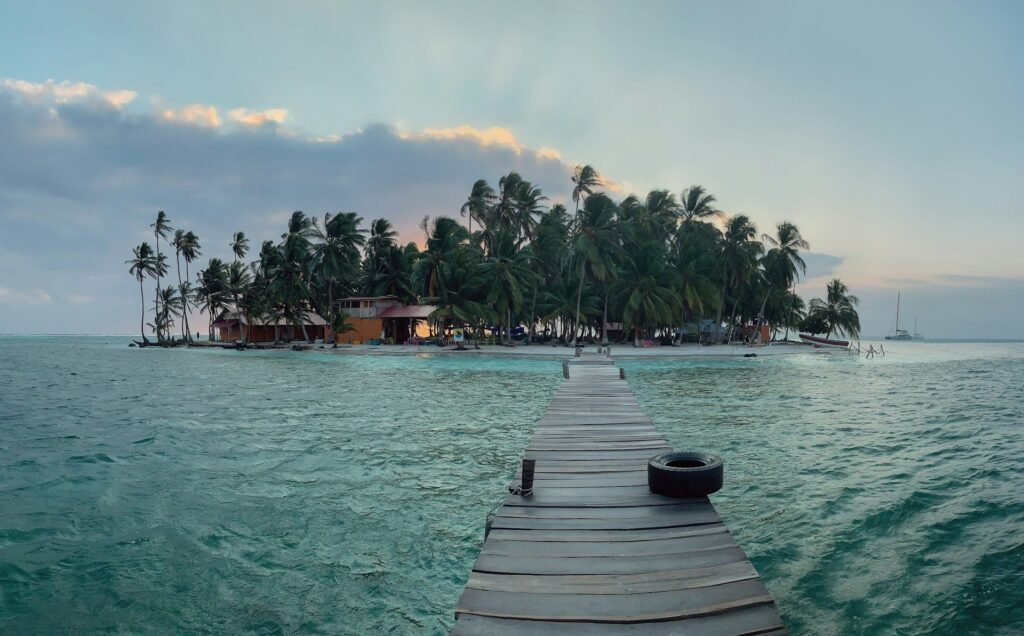
Location: San Blas Islands (Guna Yala), Caribbean coast of Panama
Best Time to Visit: December to April (dry season)
Cost Range: $150-200 USD per day for multi-day sailing trips
Difficulty Level: Low to Moderate
The San Blas Archipelago comprises 365 pristine Caribbean islands, creating one of Central America’s most spectacular island-hopping adventures. Only about 50 islands are inhabited by the autonomous Guna people, while the remainder offer untouched beaches, coral reefs, and crystal-clear waters perfect for snorkeling and swimming. Most visitors experience the islands through 4-5 day sailing adventures that include island hopping, cultural interactions with Guna communities, and opportunities to contribute to marine conservation.
The islands serve as a crucial stopover for travelers journeying between Panama and Colombia, offering a scenic alternative to flying while providing deep cultural immersion. Visitors can participate in traditional Guna activities, learn about their unique matrilineal society, purchase authentic handcrafted molas (traditional textiles), and experience one of the world’s last truly autonomous indigenous territories. The surrounding waters teem with marine life, making snorkeling and diving exceptional throughout the archipelago.
Adventure Tips: Book through reputable operators like San Blas Adventures or Bluesailing for safety and cultural sensitivity. Expect basic accommodations (hammocks or simple huts) and prepare for limited electricity and internet connectivity. Bring reef-safe sunscreen, cash for purchases from Guna communities, and respect local customs including photography restrictions.
Cultural Insight: The Guna people successfully fought for autonomy in 1925 and maintain their traditional governance system, language, and customs. Tourism provides vital income while allowing visitors to experience authentic indigenous culture, but respectful behavior and cultural sensitivity are essential.
Multi-Day Jungle Trekking to Tikal, Guatemala

Location: Tikal National Park and Maya Biosphere Reserve, Petén, Guatemala
Best Time to Visit: December to April (dry season)
Cost Range: $40-80 USD per day for guided treks
Difficulty Level: High
Tikal National Park offers Central America’s ultimate combination of adventure trekking and archaeological discovery, featuring ancient Maya pyramids rising above primary rainforest canopy. The most adventurous way to reach Tikal involves multi-day jungle treks through the Maya Biosphere Reserve, including the epic 55-kilometer trek from El Zotz to Tikal that takes hikers through some of Guatemala’s most pristine wilderness. These expeditions typically include nights camping in the jungle, guided by local community members who share traditional Maya knowledge about forest ecology and medicinal plants.
The trek from El Zotz covers approximately 6-7 hours of hiking daily through dense forests containing hidden temples and structures covered by centuries of jungle growth. Wildlife encounters include howler monkeys, over 300 bird species, jaguars, tapirs, and countless other rainforest creatures. The journey culminates with arrival at Tikal’s massive pyramids, including Temple IV which stands 65 meters tall and provides spectacular sunrise views over endless forest canopy.
Adventure Tips: Hire certified local guides through established operators for safety and cultural authenticity. Pack lightweight, quick-dry clothing, sturdy hiking boots, and comprehensive first aid supplies. Bring insect repellent, water purification tablets, and headlamps with extra batteries. Physical fitness and jungle trekking experience highly recommended.
Local Insight: These treks support indigenous communities who serve as guides and provide traditional meals prepared with forest ingredients. The Maya Biosphere Reserve represents Guatemala’s commitment to conservation while providing sustainable income for local families through responsible adventure tourism.
Cave Exploration in Belize’s Underground Maya World
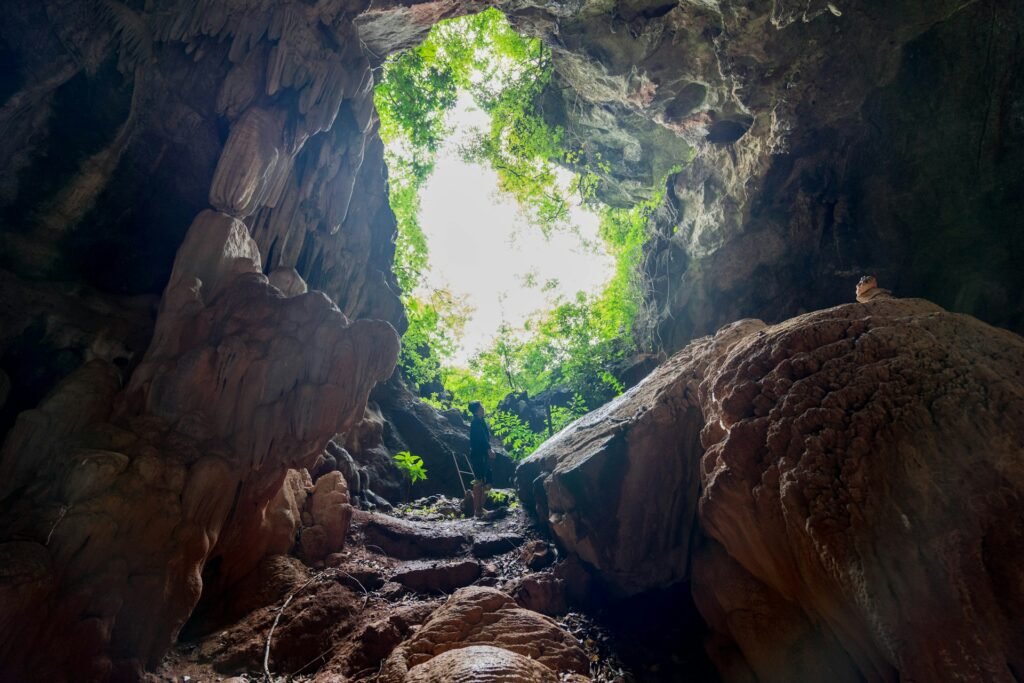
Location: Cayo District, Belize (particularly Actun Tunichil Muknal Cave)
Best Time to Visit: November to April (dry season)
Cost Range: $65-100 USD for full-day tours
Difficulty Level: Moderate
Belize’s extensive cave systems offer adventurers the chance to explore underground rivers, massive chambers, and ancient Maya ceremonial sites that have remained virtually untouched for over 1,000 years. The most famous cave adventure is Actun Tunichil Muknal (ATM Cave), where visitors swim, wade, and scramble through underground rivers to reach chambers containing crystallized human remains and Maya artifacts used in ancient sacrificial ceremonies. These caves served as entrances to Xibalba, the Maya underworld, making them sacred spaces for religious rituals and offerings.
Cave exploration in Belize combines physical adventure with archaeological discovery, as visitors encounter pottery, stone tools, and human remains left by ancient Maya priests. The experience requires swimming through underground pools, climbing over flowstone formations, and navigating tight passages while wearing only socks to protect the cave environment. Other notable cave systems include Barton Creek Cave, accessible by canoe, and Crystal Cave with its spectacular crystal formations.
Adventure Tips: Book tours well in advance as ATM Cave limits daily visitors to protect the archaeological site. Bring complete change of dry clothes, as you’ll be wet throughout the experience. No cameras allowed inside ATM Cave to preserve artifacts. Good swimming ability required for most cave tours.
Cultural Significance: These caves provide unparalleled insight into ancient Maya religious practices and beliefs about death and the afterlife. The preserved artifacts and human remains offer archaeologists crucial information about Maya civilization, making these active archaeological sites as well as adventure destinations.
Surfing World-Class Pacific Waves in El Salvador

Location: El Tunco, La Libertad, and other Pacific coast breaks
Best Time to Visit: March to November for consistent swells
Cost Range: $25-40 USD for lessons, $15-25 USD daily board rental
Difficulty Level: Beginner to Advanced
El Salvador’s Pacific coastline delivers some of Central America’s most consistent and powerful surf breaks, earning recognition as a world-class surfing destination despite its small size. The country’s compact geography means surfers can experience mountain coffee tours in the morning and catch sunset sessions on perfect point breaks the same day. El Salvador’s surf scene centers around consistent right-hand point breaks and powerful beach breaks that work year-round, with the biggest swells arriving during the March through November surf season.
The surf community in El Salvador has grown significantly in recent years, with international surf competitions bringing global attention to breaks like La Libertad and El Tunco. Local surf schools offer professional instruction at affordable rates, while the warm tropical waters (80-85°F year-round) eliminate the need for thick wetsuits. Advanced surfers can explore remote breaks along the coast, often finding uncrowded waves and pristine beach settings.
Adventure Tips: Surf conditions are most consistent during the rainy season (May-November) when Pacific storms generate larger swells. Beginner-friendly breaks include El Tunco, while advanced surfers should explore La Libertad’s more powerful waves. Rent boards locally to avoid airline fees, and consider surf packages that include lessons, accommodation, and meals.
Local Insight: Surfing has become an important part of El Salvador’s tourism economy, providing income for local communities through surf schools, board rentals, and beachside restaurants. Many surf breaks are located near small fishing villages where visitors can experience authentic Salvadoran coastal culture.
Best Seasons for Central America Adventure Travel
Understanding Central America’s seasonal patterns is crucial for maximizing your adventure experiences and budget. The region experiences two distinct seasons that significantly impact both activity availability and travel costs.
Dry Season (December to April) represents the peak period for Central America adventure travel, featuring sunny skies, minimal rainfall, and ideal conditions for most outdoor activities. This period sees average temperatures ranging from 75-85°F in coastal areas and cooler conditions in highland regions. The dry season provides optimal conditions for volcano hiking, zip-lining, diving, and any activity requiring clear weather and accessible trails.
However, dry season travel comes with trade-offs including higher accommodation costs (20-40% premium), crowded popular destinations, and advance booking requirements. December through February sees the highest visitor numbers, particularly around Christmas, New Year, and Easter celebrations.
Wet Season (May to November) offers significant advantages for budget-conscious adventurers, including 20-30% lower costs on tours and accommodation, fewer crowds at major attractions, and lush, green landscapes. Contrary to common misconceptions, the “rainy season” typically features short afternoon showers rather than continuous rainfall, leaving mornings and evenings clear for activities.
Certain activities actually peak during wet season, including white-water rafting (higher river levels), wildlife viewing (animals more active), and surfing (larger Pacific swells). The wet season also provides unique opportunities like turtle nesting seasons and optimal conditions for exploring rainforest ecosystems when they’re at their most vibrant.
Budget Planning for Central America Adventure
Central America offers exceptional value for adventure travelers, with daily costs significantly lower than similar experiences in North America or Europe. Budget-conscious travelers can experience world-class adventures for $25-35 USD per day by staying in hostels, using local transportation, and eating at local establishments.
Daily Budget Breakdown:
- Budget travelers: $25-35 USD per day
- Mid-range travelers: $50-80 USD per day
- Luxury travelers: $100-200+ USD per day
Country-Specific Costs: Guatemala, Nicaragua, Honduras, and El Salvador offer the best value, with daily costs averaging $23-30 USD per person. Costa Rica, Panama, and Belize are more expensive, averaging $40-55 USD per day, but still providing excellent value compared to similar destinations globally.
Money-Saving Strategies: Travel during wet season for 20-30% savings, use local “chicken buses” for transportation ($1-3 USD per journey), stay in hostels and homestays ($8-15 USD per night), eat at local comedores and markets ($3-6 USD per meal), and book multi-day adventure packages for better rates.
Activity Costs: Most individual adventure activities range from $25-85 USD, with multi-day experiences like San Blas sailing trips or volcano boarding sunset tours commanding premium prices of $150-200 USD per day. Budget an additional $200-300 USD for optional activities during a two-week trip.
Essential Safety Tips for Adventure Travelers
Central America’s reputation for danger often exceeds reality, particularly for tourists following sensible precautions. The vast majority of adventure travelers experience no safety issues while enjoying activities that would be significantly more expensive in other global destinations.
Pre-Trip Safety Preparation:
- Purchase comprehensive travel insurance covering adventure activities and medical evacuation
- Research current security situations in specific regions and avoid known problem areas
- Register with your embassy for extended trips and share itineraries with family/friends
- Get necessary vaccinations and carry prescription medications with documentation
On-Ground Safety Practices:
- Use only reputable tour operators with proper safety certifications and insurance
- Avoid displaying expensive jewelry, electronics, or large amounts of cash
- Don’t walk alone at night in cities, and use pre-arranged transportation
- Keep copies of important documents in multiple locations (physical and digital)
- Learn basic Spanish phrases for emergency situations
Activity-Specific Safety: Always verify operator safety records and equipment quality, particularly for high-risk activities like volcano boarding and white-water rafting. Most adventure activities in Central America maintain excellent safety records when conducted through established operators with proper certification.
Health Precautions: Stay hydrated (especially at higher altitudes), use reef-safe sunscreen SPF 50+, apply DEET-based insect repellent in jungle areas, and consider malaria prophylaxis for certain regions. Most adventure destinations have adequate medical facilities, but carry comprehensive first aid supplies for remote activities.
Adventure Packing Essentials
Packing for Central America adventure requires balancing diverse climate conditions, activity-specific gear, and weight restrictions for multi-country travel. The region’s varied elevations and microclimates mean temperatures can range from tropical heat at sea level to near-freezing conditions on volcano summits.
Essential Adventure Gear:
- Quick-dry synthetic clothing and hiking shorts
- Sturdy, broken-in hiking boots and water shoes
- Lightweight waterproof rain jacket and pants
- Insect repellent (30%+ DEET) and reef-safe sunscreen (SPF 50+)
- Waterproof dry bags for electronics and documents
- Headlamp/flashlight with extra batteries
- Comprehensive first aid kit with band-aids, antiseptic, and pain relievers
Climate-Specific Items:
- Lightweight layers for varying altitudes and air-conditioned transportation
- Warm jacket or fleece for volcano hikes and highland areas (can rent locally)
- Sun hat with chin strap and quality sunglasses
- Mosquito net for jungle accommodations
- Water purification tablets or filtration system
Tech and Safety Equipment:
- Waterproof phone case and portable power bank
- Universal power adapter and voltage converter
- Whistle for emergency situations
- Multi-tool or Swiss Army knife (check airline regulations)
- Copies of important documents stored both physically and digitally
Recommended Adventure Tour Operators
Selecting reputable tour operators is crucial for safe, authentic, and memorable Central America adventure experiences. Established operators provide proper safety equipment, experienced guides, and support local communities through fair employment practices.
Multi-Country Specialists:
- G Adventures: Offers comprehensive Central America tours with small groups and local guides
- Intrepid Travel: Specializes in cultural immersion and sustainable adventure tourism
- Exodus Adventure Travels: Features active adventures with experienced group leaders
Country-Specific Operators:
- Mayan Gateway: Guatemala and Belize specialist with customized private trips
- Pacuare Outdoor Center: Costa Rica’s premier white-water rafting operator
- San Blas Adventures: Panama’s leading San Blas archipelago tour company
Selection Criteria: Choose operators with proper insurance, certified guides, established safety records, and positive recent reviews. Look for companies that support local communities and practice sustainable tourism principles.
